Two years ago a suggestion was planted that Steven Spielberg‘s West Side Story (12.10) would feature the usual desaturated milky-gray palette that dp Janusz Kaminski has used over and over, regardless of subject, mood or theme.
In March ’20 a Vanity Fair spread seemed to confirm that West Side Story would instead use vivid, real-life colors.
Last weekend a new West Side Story teaser appeared on the Oscar telecast, and now it appears that the film has two side-by-side color schemes — standard milky-drab Kaminski tones when the focus is on outdoor street-gang activity (Sharks vs. Jets) vs. brighter, fuller colors — bright rose, yellows and gleaming whites — when the focus is on the (mostly indoor) women in the film, and particularly on Tony (Ansel Elgort) and Maria (Rachel Zegler).
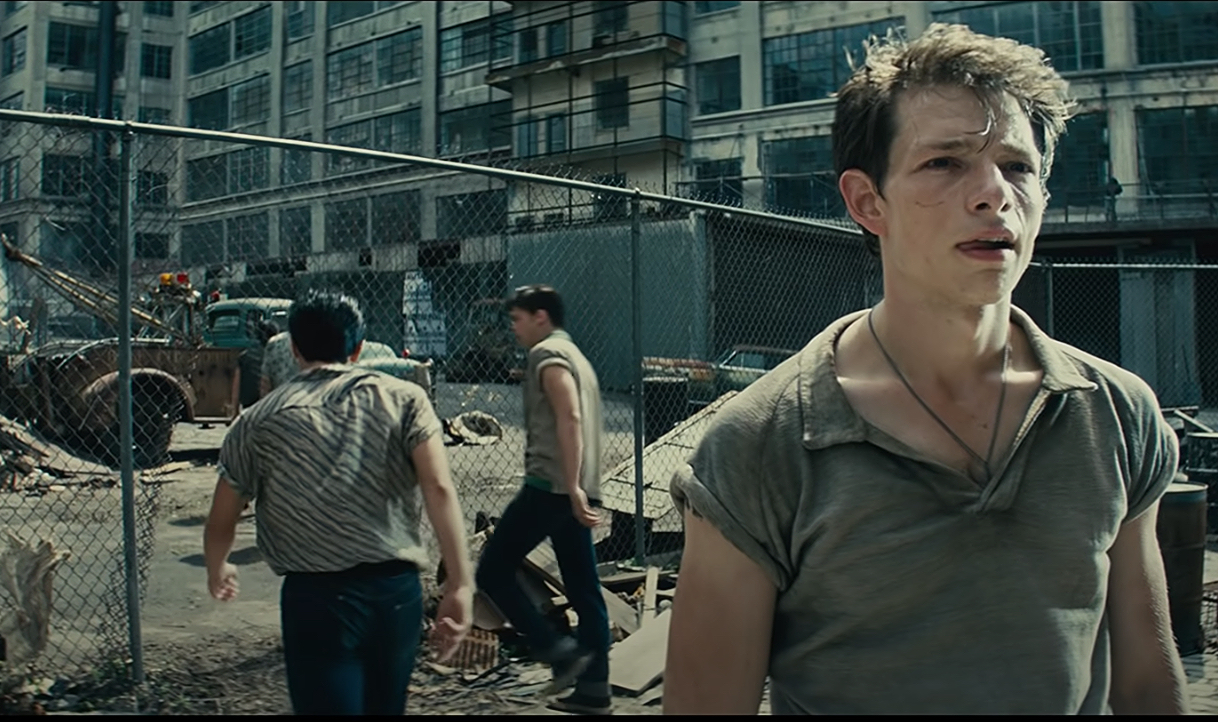
From “Beardo Breaks News to Kaminski,” posted on 3.16.20:
INT. Steven Spielberg‘s post-production office on West Side Story. Spielberg is at his desk, reading a hardbound edition of Dostoyevski’s “The Brothers Karamazov.” A rap-rap on the door. Spielberg looks up — it’s his longtime visual collaborator and West Side Story dp Janusz Kaminski.
Kaminski: Steven?
Spielberg: Janoo!
Kaminski: You good? The assembly looks great!
Spielberg: (gestures) Siddown.
Kaminski: Somethin’ up?
Spielberg: (exhales) I’ve changed my mind about West Side Story looking like a standard Kaminski…desaturated milky colors, shafts of light through windows, all that crap.
Kaminski: No!
Spielberg: Sorry, bruh, but not this time. I want vivid, real-world, life-like colors. I want the dance scene where Tony and Maria meet to have the same red colors that Robert Wise and Daniel Fapp went with.
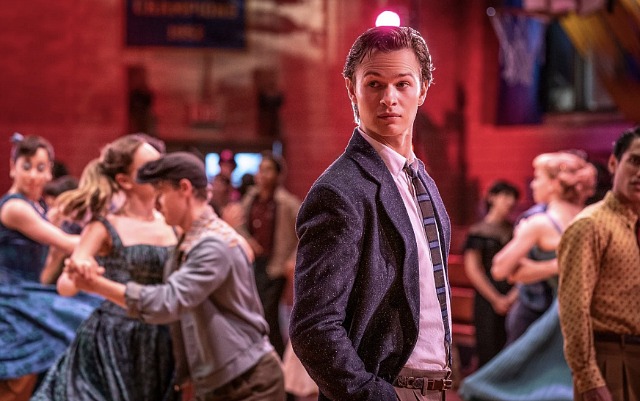
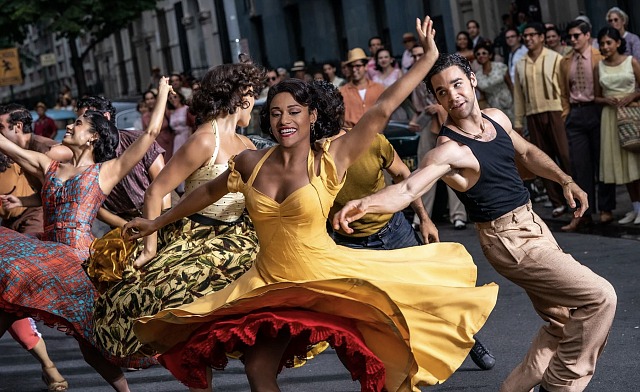

Kaminski: But we almost always shoot with my faded palette! You agreed to stick with it.
Spielberg: I’ve changed my mind.
Kaminski: But we released an image last summer that had my grayish-beige scheme! You approved it!
Spielberg: It was just a photo. It’s not binding.
Kaminski: Wow.
Spielberg: I’m the director, Janoo.
Kaminski: I feel betrayed.
Spielberg: Adapt or die.
Kaminski: What about the Vanity Fair piece with the new photos? They’re grayish milky. I approved them.
Spielberg: I scrapped them. The Vanity Fair photos reflect the new approach.
Kaminski: Have you at least told Anthony Breznican about this?
Spielberg: I’m not making a big deal about it. Breznican doesn’t write for American Cinematographer. He probably won’t even notice the difference.
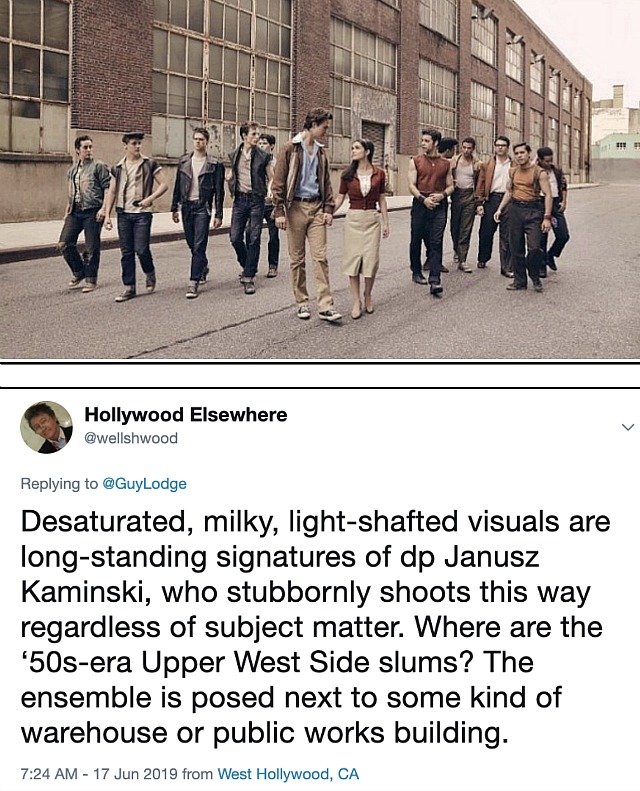
From “Mr. Milky Strikes Again“, posted on 6.17.19:
One of the complaints about Robert Wise‘s West Side Story (’61) was that here and there the Upper West Side slums of Manhattan looked too flush and pretty. Wise cleaned up the milieu, painting the tenement alleys bright red and de-rusting the fire escapes, and Daniel Fapp‘s cinematography, following Wise’s lead, made it seem as if much of the film was happening on a Hollywood back lot.
Director Steven Spielberg and dp Janusz Kaminski are clearly looking to lean the other way on their new version of West Side Story (Disney/Fox, 12.18.20).
Kaminski is delivering the same desaturated, vaguely milky colors that have become his trademark in a majority of the films he’s shot for Spielberg over the last quarter-century.
Kaminski did the same thing to the Washington Post newsroom in The Post — he grayed and grimmed it up, certainly compared to Gordon Willis‘s newsroom in All The President’s Men.
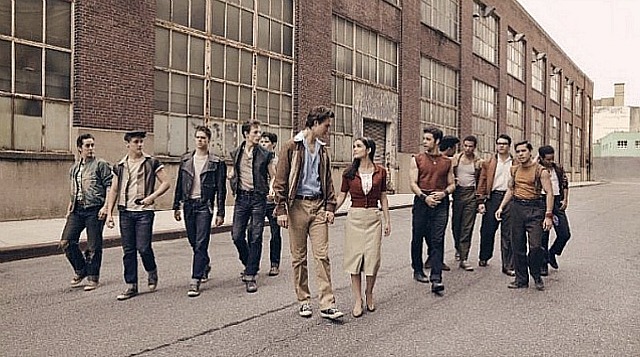
Generally speaking…
(1) I’m sorry but I keep sensing that Spielberg’s film will somehow underwhelm. A voice keeps telling me that West Side Story will arouse every treacly, gooey, sentimental impulse in his system.
(2) It was probably a bad idea to remake West Side Story for 2020 audiences. The original idea came from early to mid ’50s NYC gang culture, and the original B’way stage play opened in 1957 — 63 years ago. The 1961 film version was derided up and down for being glossy and inauthentic. Spielberg will almost certainly deliver a more realistic ’50s milieu, but the strongly emotional song-and-ballet material (not to mention the anachronistic ’50s period flavoring) probably won’t connect with under-35s, who will probably regard it at arm’s length. Romeo and Juliet is eternal, but West Side Story has essentially become a nostalgic timepiece for boomers;
(3) If a single young actor (either a Jet or a Shark) says “daddy-o”, West Side Story will collapse like a house of cards.
